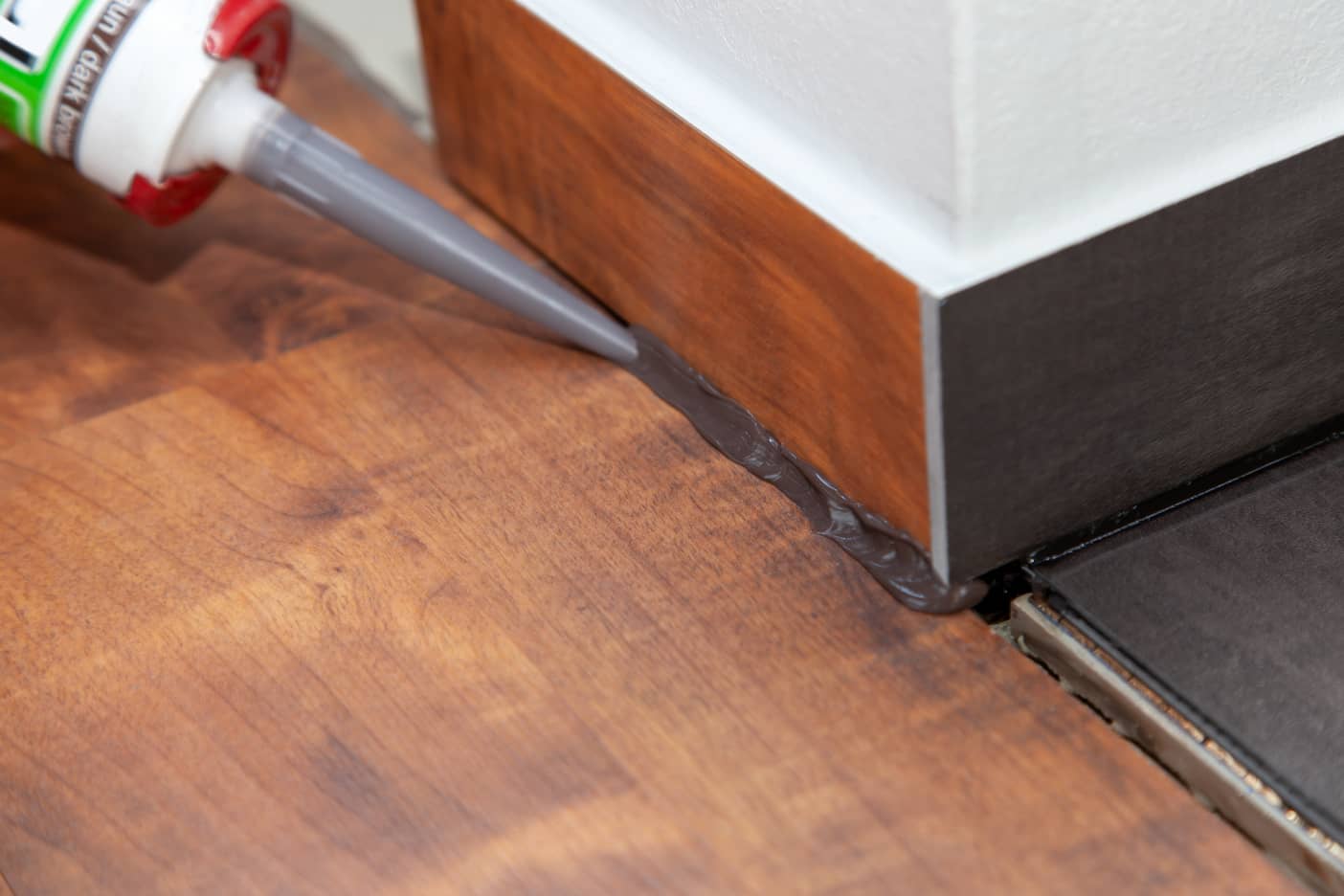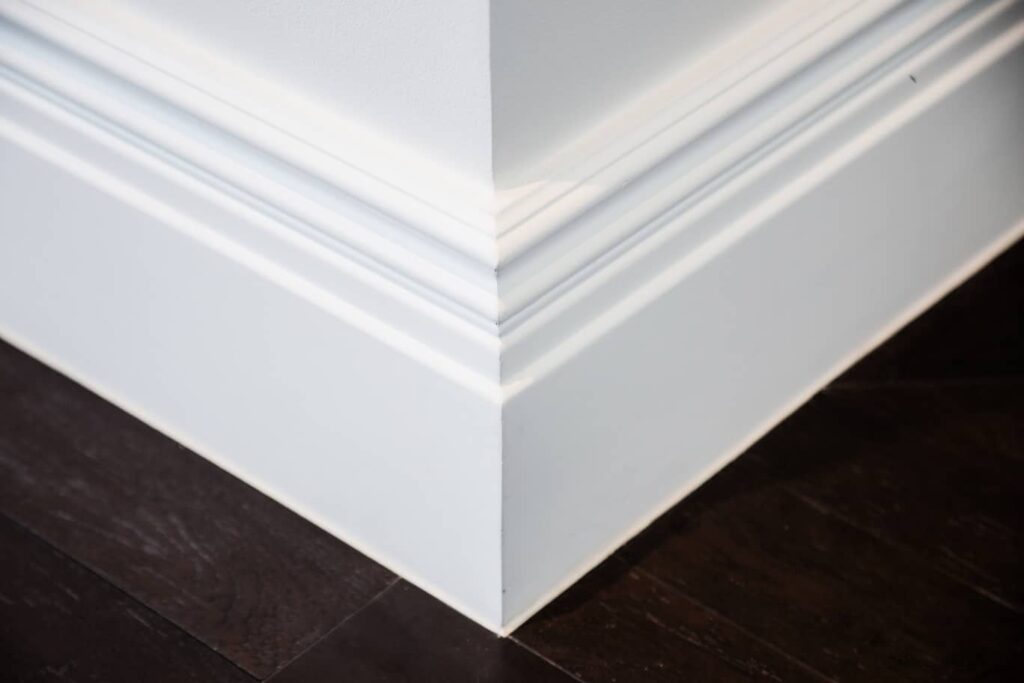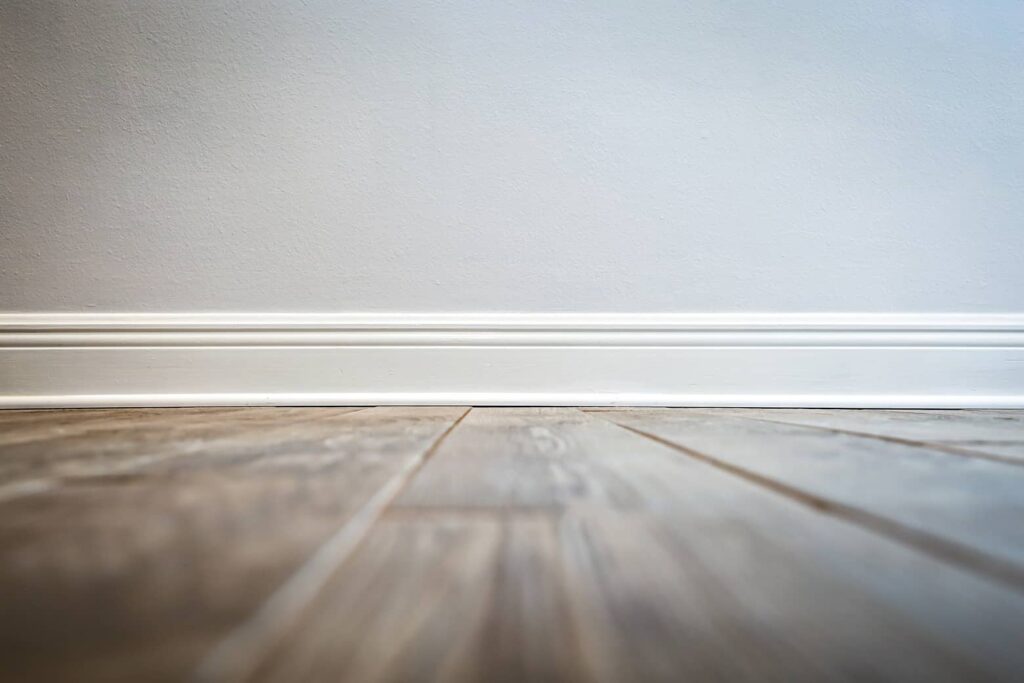
Owning a home has a lot of perks and a lot of maintenance needs. If you are looking to update your home, most homeowners start with the floor. New flooring can immediately change the aesthetics of the house. Consequently, if you choose tile flooring as your new upgrade, make sure that the contractor knows how to make a smooth transition from the floor to the walls. How to fill a gap between baseboard and tile floor? This is done with caulk. If the gap is too wide for caulk, look to use a quarter-round.
Let’s take a look below at what all of this means.
What Are Baseboards?
Baseboards are typically a piece of wood that is cut into various lengths. The baseboards are installed at the bottom of the wall where the wall meets the floor. This is meant to hide the gap between the floor and the wall and give a seamless look. Most baseboards are 3″ to 8″ in height and can be used in various home locations. In some cases, baseboards are also referred to as base molding, floor molding, or wainscoting.

What Tools Do I Need?
Just like with any project in your home, tools, and materials are needed to fill a gap between baseboard and tile floor. Let’s take a look below at what is needed for this project.
- 3 in 1 tool for smoothing out the caulking beads
- Utility knife to cut open the caulk tip
- Caulking gun-holds the caulk and allows you to squeeze the caulk out of its tube at your own pace
- Caulk
- Liquid caulk remover for clean up
- Caulking tape to protect your wall
- Putty knife for scraping away old excess caulk and paint
- Wire brush for cleaning
- Vinegar for cleaning
- Plastic gloves for hand protection
- Drop cloth to protect your floor
- Vacuum for clean up
- Utility knife to cut open the caulk tip
- Touch-up paint that matches the wall paint
How Do I Fill The Gap?
If you have decided how to fill the gap between baseboard and tile floor by using caulk, then follow these steps for a successful project.
- Remove any old and excess paint or caulk from the baseboard where you will add the new caulk.
- Use warm water and wipe away the area to create a smooth surface. Use your shop vacuum to suck up any loose debris that you have removed.
- Tape off the floor with blue painter’s tape along the ridgeline where the baseboard meets the tile floor. Also, use a drop cloth under the area where you will apply the caulk.
- Remove the tip of your caulking tube with your utility knife. Slice it off at an angle so that the caulk comes out at a smooth angle.
- Place the paintable latex silicone caulking tube into the caulking gun and lock it into place.
- Start caulking the areas between the baseboard and tile floor by working slowly down the line of the baseboard. Use your 3-in-1 caulking tool to smooth out the caulk needs and remove any excess caulk with a wet cloth or towel. Once it is dry, remove the tape.
What Are The Other Options?
Believe it or not, there are a few other ways that you can fill in the gap between your baseboards and tile flooring. Let’s take a look below at what those options are.
- Use quarter rounds – Quarter-rounds are a type of wood trim that measures 3/4 of an inch high. Using your miter saw you can cut the quarter-round to any angle needed for a smooth transition of your baseboards. Typically, a nail gun is used to nail it to the baseboard. Be sure to use wood putty to cover up the nail holes.
- Get new baseboards – In most cases, when installing new tile flooring, the baseboards will be removed. If after you have installed the tile floor, you notice that the original baseboards have too much of a gap between the floor and board, install new ones. This might give you a new look and blend the floor with the baseboards more cleanly.
- Sometimes you can insulate – If the gaps are too big, you can consider adding weatherstripping to the areas between the baseboard and the tile floor.
Other Recommended Maintenance
Now that you have figured out the best way to fill the gap between your tile floor and baseboards, make sure to read up on how long it takes for caulk to dry. You wouldn’t want to mess up the project by removing the painter’s tape or painting over the caulk too soon.
Next, if you are adding new baseboards or re-installing old ones due to your tile floor installation, painting is almost always necessary. This would be a good time to read up on how to remove paint from tiles. In some cases, the homeowner, or contractor might spill some paint drops on the new tile floor.
Lastly, if you are installing tile flooring, it is possible that you had a carpet in that area at one time. It is important to know how to clean the concrete pad under the carpet, before you go and tile. Removing all glue and materials after you remove the carpet is key.

When Do I Call A Professional?
Calling a professional to seal the gaps between your tile floor and baseboards is a great idea. They will have the time and patience to caulk all areas that are needing to be sealed. Additionally, they can install quarter-round if the gaps are too broad. Reach out to your local home inspection team to determine if there are other projects that need attention before caulking the gaps between the baseboards and tile flooring. Also, they can refer you to a reputable licensed general contractor to get the job done.
Conclusion
When it comes to a project like sealing gaps between tile floors and baseboards, it is always a good idea to hire a professional contractor. Licensed general contractors often have the tools and knowledge of how best to seal any gaps between the flooring and your baseboards. In some instances, installing new baseboards works best. Before you call a licensed general contractor reach out to your local home inspection team. They can inspect your whole house and determine if other projects might need to occur before you close the gap between your tile floor and baseboards. Boggs Inspection Services can check your baseboards during a home inspection in the Olympia, Washington area.



